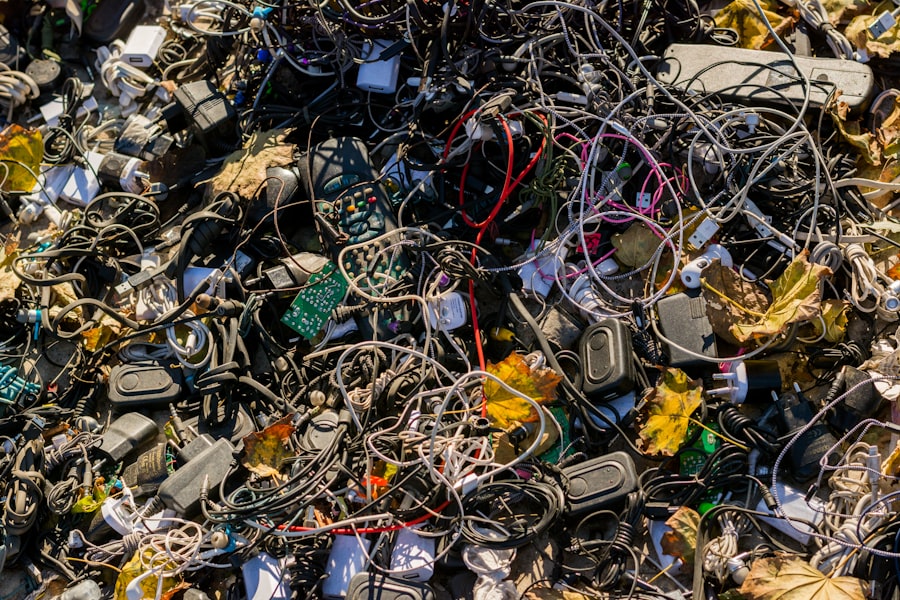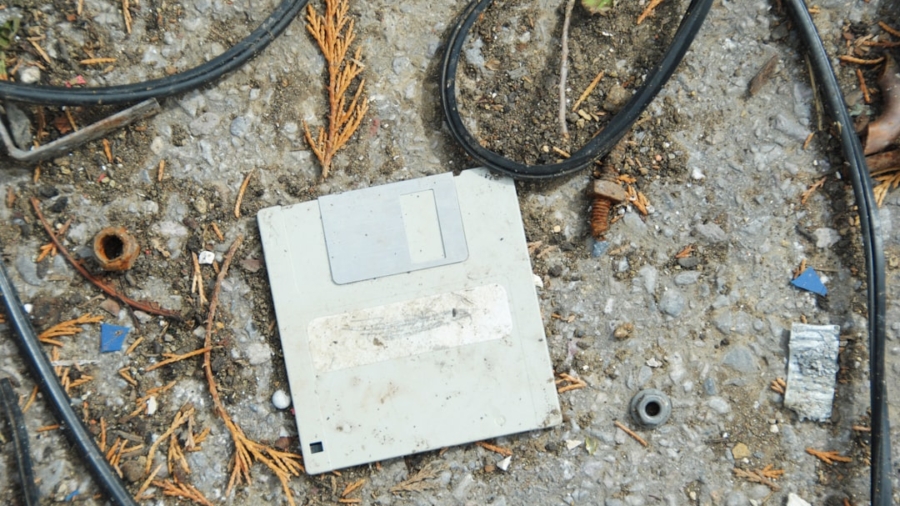The rapid advancement of technology has led to an unprecedented increase in electronic waste, commonly referred to as e-waste. This term encompasses discarded electrical or electronic devices, including everything from smartphones and laptops to refrigerators and televisions. The global proliferation of consumer electronics has resulted in staggering amounts of e-waste, with estimates suggesting that over 50 million metric tons are generated annually.
This figure is projected to rise as more people gain access to technology and as devices become obsolete at an accelerated pace.
E-waste poses significant challenges not only in terms of volume but also in the complexity of its composition.
Many electronic devices contain hazardous materials such as lead, mercury, cadmium, and brominated flame retardants. When improperly disposed of, these substances can leach into the soil and water systems, posing serious health risks to humans and wildlife alike. Moreover, the informal recycling sector, prevalent in many developing countries, often lacks the necessary safety measures to handle these toxic materials, leading to further environmental degradation.
The sheer scale of e-waste generation and the dangers associated with its disposal highlight the urgent need for sustainable solutions.
Key Takeaways
- E-waste is a growing problem with harmful environmental and health impacts
- E-waste contributes to pollution, resource depletion, and toxic chemical exposure
- Biodegradable electronics have the potential to reduce e-waste and its impact on the environment
- Biodegradable electronics are designed to break down and decompose in a natural environment
- The benefits of biodegradable electronics include reduced environmental impact, sustainable design, and potential for new applications
The Impact of E-Waste on the Environment
The environmental ramifications of e-waste are profound and multifaceted. When electronic devices are discarded in landfills, they can take hundreds of years to decompose, during which time they release harmful substances into the environment. For instance, lead from circuit boards can contaminate groundwater, while cadmium from batteries can accumulate in soil and enter the food chain.
This contamination not only affects local ecosystems but also poses long-term health risks to communities that rely on these natural resources for their livelihoods. In addition to soil and water pollution, e-waste contributes to air pollution when incinerated.
The global nature of e-waste disposal further complicates the issue; developed nations often export their e-waste to developing countries under the guise of recycling. This practice not only shifts the burden of waste management but also exposes vulnerable communities to hazardous materials without adequate protections. The environmental impact of e-waste is a pressing concern that necessitates innovative approaches to electronics design and disposal.
The Potential of Biodegradable Electronics

In light of the growing e-waste crisis, biodegradable electronics have emerged as a promising solution. These innovative devices are designed to break down naturally after their useful life, significantly reducing their environmental footprint. By utilizing materials that can decompose in natural environments, biodegradable electronics aim to mitigate the harmful effects associated with traditional electronic waste.
This concept aligns with the broader movement towards sustainability and circular economy principles, where products are designed with their end-of-life in mind. The potential applications for biodegradable electronics are vast. From consumer gadgets like smartphones and tablets to medical devices and sensors, the integration of biodegradable materials could revolutionize how we approach technology.
For instance, imagine a smartphone that could safely decompose after a few years of use, leaving no toxic residue behind. This shift not only addresses the e-waste problem but also encourages manufacturers to rethink their production processes and material choices. As research progresses, the feasibility of widespread adoption of biodegradable electronics becomes increasingly plausible.
How Biodegradable Electronics Work
Biodegradable electronics leverage a variety of materials that can break down naturally over time. These materials often include biopolymers derived from renewable resources such as corn starch or cellulose, which can be engineered to possess the necessary electrical properties for electronic applications. For example, researchers have developed conductive polymers that can replace traditional metals in certain components, allowing for functionality while maintaining biodegradability.
The design of biodegradable electronics also involves careful consideration of the entire lifecycle of the product. This includes not only the materials used but also the manufacturing processes and end-of-life scenarios. For instance, some biodegradable devices are designed to dissolve in water or compost under specific conditions, ensuring that they do not contribute to landfill waste.
Additionally, advancements in nanotechnology have enabled the creation of biodegradable circuits that maintain performance while being environmentally friendly. This holistic approach is crucial for ensuring that biodegradable electronics can effectively replace conventional devices without compromising on quality or usability.
The Benefits of Biodegradable Electronics
The benefits of biodegradable electronics extend beyond environmental considerations; they also encompass economic and social dimensions. One significant advantage is the reduction in landfill waste associated with traditional electronic devices. By designing products that can decompose naturally, manufacturers can help alleviate the burden on waste management systems and reduce the need for new landfills.
This shift could lead to lower disposal costs for consumers and municipalities alike. Moreover, biodegradable electronics can foster innovation within the tech industry. As companies invest in research and development for sustainable materials and designs, they may discover new markets and opportunities for growth.
This transition could also enhance brand reputation among environmentally conscious consumers who prioritize sustainability in their purchasing decisions. Furthermore, by addressing the e-waste crisis through biodegradable solutions, companies can contribute positively to global sustainability goals, potentially attracting partnerships and investments focused on green technologies.
Challenges and Limitations of Biodegradable Electronics

Despite their potential advantages, biodegradable electronics face several challenges that must be addressed before they can achieve widespread adoption. One primary concern is performance; while biodegradable materials have made significant strides in recent years, they may not yet match the durability and efficiency of traditional materials used in electronics. For instance, issues related to moisture sensitivity or thermal stability can limit their applicability in certain environments or applications.
Additionally, there are economic considerations associated with transitioning to biodegradable electronics. The production processes for these materials may be more costly than conventional methods, which could deter manufacturers from making the switch. Furthermore, consumer acceptance plays a crucial role; if consumers are not willing to pay a premium for biodegradable products or if they lack awareness about their benefits, market penetration may be slow.
Addressing these challenges will require collaboration between researchers, manufacturers, and policymakers to create an ecosystem that supports sustainable innovation.
Current Developments in Biodegradable Electronics
Recent advancements in biodegradable electronics have demonstrated promising progress in both research and practical applications. For example, researchers at various universities have developed prototypes of biodegradable sensors that can monitor environmental conditions without leaving harmful residues behind. These sensors utilize organic materials that can decompose after use, showcasing how technology can be harmonized with ecological principles.
Moreover, companies are beginning to explore commercial applications for biodegradable electronics. Startups focused on sustainable technology are emerging with products ranging from biodegradable phone cases to fully functional electronic devices designed for short-term use. These developments indicate a growing recognition within the industry of the need for sustainable alternatives to traditional electronics.
As more organizations invest in this area, we may see a surge in innovative products that prioritize both functionality and environmental responsibility.
The Future of Biodegradable Electronics
Looking ahead, the future of biodegradable electronics appears promising yet complex. As awareness of e-waste issues continues to grow among consumers and policymakers alike, there will likely be increased pressure on manufacturers to adopt sustainable practices. This shift could catalyze further research into new materials and technologies that enhance the performance and affordability of biodegradable electronics.
Additionally, regulatory frameworks may evolve to support the development and adoption of biodegradable products. Governments could implement incentives for companies that prioritize sustainability or establish standards for electronic waste management that encourage innovation in biodegradable solutions. As these trends unfold, it is conceivable that biodegradable electronics will become a mainstream option within the tech industry, fundamentally altering how we design, produce, and dispose of electronic devices.
In conclusion, while challenges remain in realizing the full potential of biodegradable electronics, ongoing research and development efforts hold promise for a more sustainable future in technology. By addressing both environmental concerns and consumer needs, biodegradable electronics could play a pivotal role in mitigating the e-waste crisis while fostering innovation within the industry.
In the quest to reduce e-waste, biodegradable electronics present a promising solution by offering devices that can decompose naturally after their useful life. This innovative approach not only addresses environmental concerns but also paves the way for sustainable technology development. For those interested in exploring other technological advancements, the article “The Ultimate Guide to the Best Screen Recording Software in 2023” provides insights into the latest software tools that enhance digital productivity. While not directly related to biodegradable electronics, understanding the broader landscape of technological tools can offer a comprehensive view of how innovation is shaping our digital and environmental future.
FAQs
What are biodegradable electronics?
Biodegradable electronics are electronic devices that are designed to break down and decompose in the environment, reducing the amount of electronic waste produced.
How do biodegradable electronics reduce e-waste?
Biodegradable electronics reduce e-waste by breaking down and decomposing in the environment, rather than contributing to the growing problem of electronic waste accumulation.
What are the benefits of biodegradable electronics?
The benefits of biodegradable electronics include reducing the environmental impact of electronic waste, minimizing the need for electronic waste disposal, and promoting sustainable and eco-friendly technology.
Are biodegradable electronics currently available in the market?
While the concept of biodegradable electronics is being researched and developed, they are not yet widely available in the market. However, there is ongoing progress in this area of technology.
What are the challenges in developing biodegradable electronics?
Challenges in developing biodegradable electronics include finding materials that are both functional for electronic devices and environmentally friendly, as well as ensuring that the devices break down in a safe and controlled manner.

